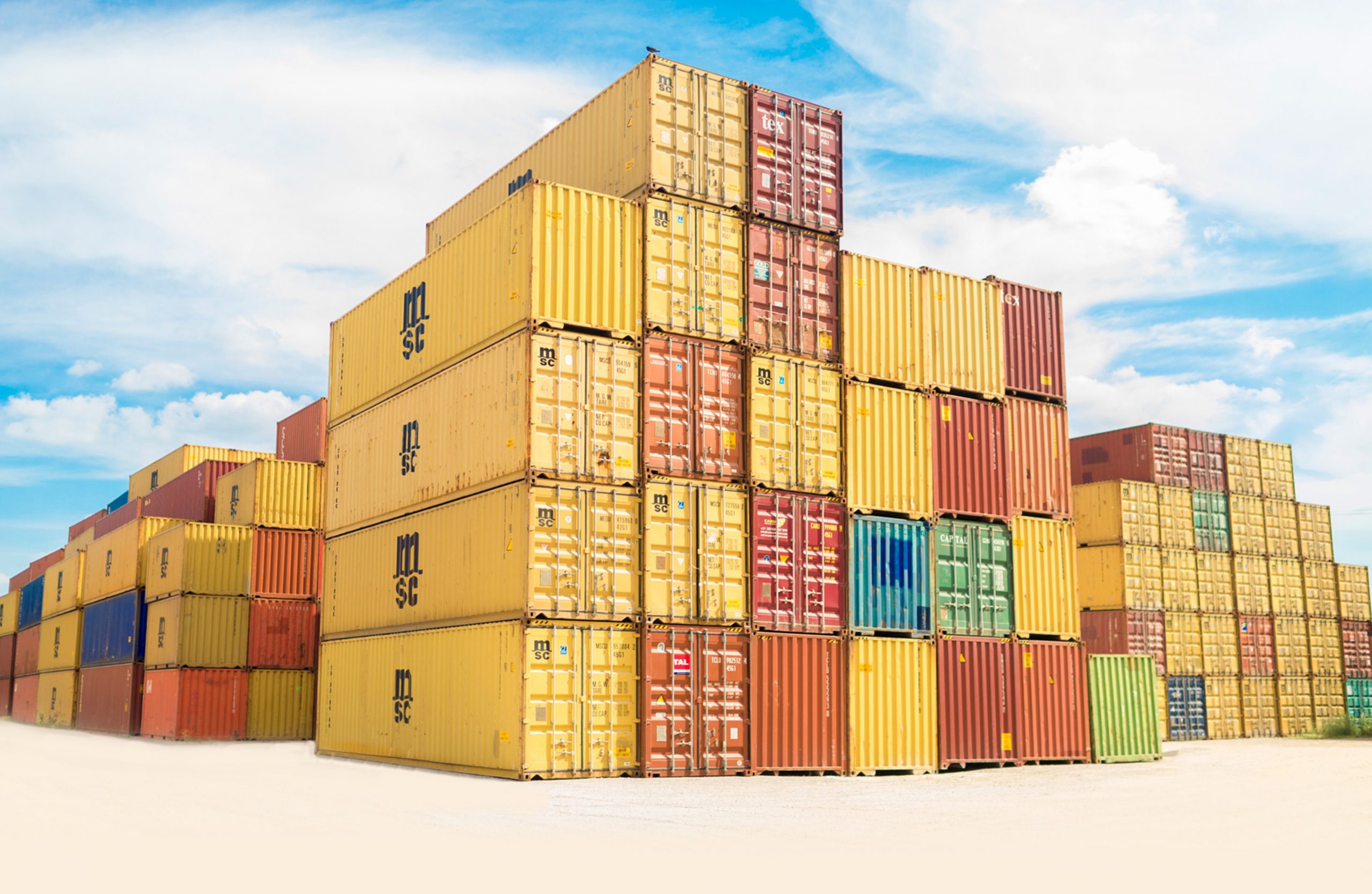If you want to know how intermodal transport works, you will be particularly interested in this article. In this post we will explain this movement of unit loads that serves to move goods using different combined means. How is it done without opening the units during the journey? How does the minimisation of cargo handling prove to be so beneficial? All the details here.
The ABC of intermodal transport
Intermodal transport is the process by which goods are moved from origin to destination using at least two different means of transport. This methodology also has other relevant characteristics. For it to be intermodal transport, the goods must be contained in the same unit, i.e., at no point in the process are they handled when the means of transport are interchanged.
For a successful transfer, the products are transported in loading units or transport units, which may take the form of boxes, containers, pallets, etc. These units will, of course, be closed at all times to avoid any inconvenience during the transports and to facilitate the transfer.
The goal of intermodal transport
Behind the idea of intermodal transport, there is a fundamental principle of efficiency. The aim is to obtain the most efficient way to make international exchanges in order to gain in competitiveness. Intermodal transport can therefore be the key to success within the logistics plan if it is applied correctly.
The optimisation of resources allows for increased profitability, which will end up translating into higher profits. Logistics companies that ship products between countries can benefit greatly from this transport dynamic, as it makes the flows within the logistics chain more efficient and streamlines all the movements that occur once the product leaves the warehouse.
How does intermodal transport work today?
We cannot yet fully explain and account for the impact of the COVID 19 pandemic globally, but we are certainly facing a complete paradigm shift. What we can say is that consumer habits have changed significantly in the last two years and that, with them, the online retail sector has been completely transformed.
Especially in the transport and product marketing industry, digitalisation has taken hold and profoundly altered all processes that comprise this activity. A trend towards automation, with data analysis as a key element, must take into account the increased expectations of consumers, who have become accustomed to having everything quickly at their fingertips and not wanting to pay high shipping costs.
Intermodal transport works as a strategic solution to overcome the challenges posed by international trade in this post-pandemic period that we are going through in the industry. To achieve these results, intermodal transport proposes to use the advantages of each of the systems it uses, ranging from the flexibility and adaptability of distribution and collection of road transport; the economic load and the great capacity to transport huge volumes of rail transport combined with the fixed schedules that reduce the problems of coordination and punctuality; and the low prices and the capacity to connect locations proposed by sea and river transport.
But, in addition to the advantages that can be obtained from each particular system, there are benefits of intermodal transport that are characteristic of the entire system itself and that are the result of using a combination of these. In other words, they are the key to making the intermodal system work and explain its success.
Economic efficiency
Intermodal transport must ensure the combination of modes of transport that is most efficient in the specific case of each individual product. Crucial to this will be taking into account long distances and working with unit loads. This efficiency also has other aspects: by combining alternatives, it is not necessary to budget for downtime, rest times or the need for storage of goods. Intermodal transport will take these times into account and use them to its advantage.
Improving security
As the goods to be transported are transported in closed cargo units, this ensures that they remain intact. By doing so, the risks of breakage, but also of theft and other instances that can compromise the cargo are significantly reduced. In this sense, intermodal transport works by offering something very important, which is the guarantee that the cargo will arrive as it left its origin. By being locked, possible incidents are minimised and security is increased, impacting on overall profitability.
Sustainability
Combining different transport systems also ends up meaning a reduction in noise levels, CO2 emissions and waste, as you are not changing packaging or generating new packaging. This makes intermodal transport also work in a more sustainable way in general terms, because what is achieved is a much more environmentally friendly overall model. Today, this is even more important given the critical situation of our planet, and goes hand in hand with the decision of states to promote sustainable practices through legislation.
In short, intermodal transport will mean lower total cost than quoting separate legs when shipping goods, and it offers more security and greater sustainability. Three aspects that are of utmost relevance in the business scheme.
If you want to know more about intermodal transport or other logistics modalities, do not hesitate to contact us. At Tradisa, we are an integrated logistics operator offering solutions in Europe. We have a large fleet that allows us to offer flexibility and capacity to meet the needs of our customers, with full traceability of shipments.


